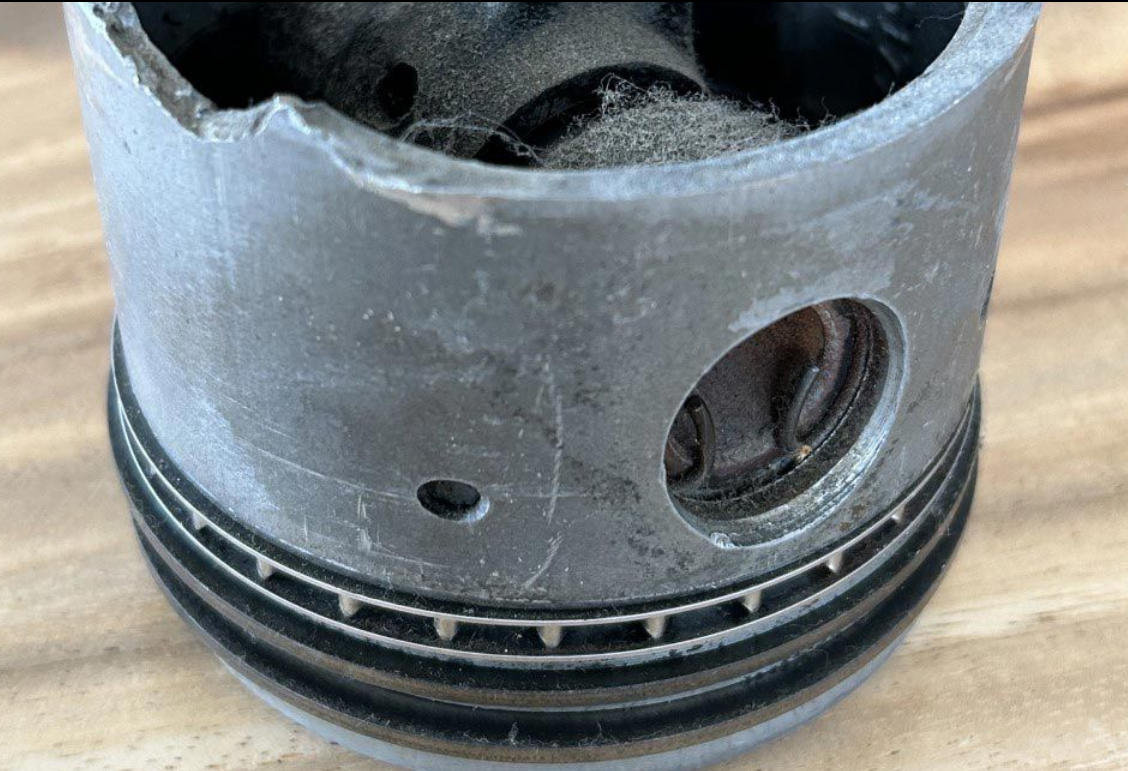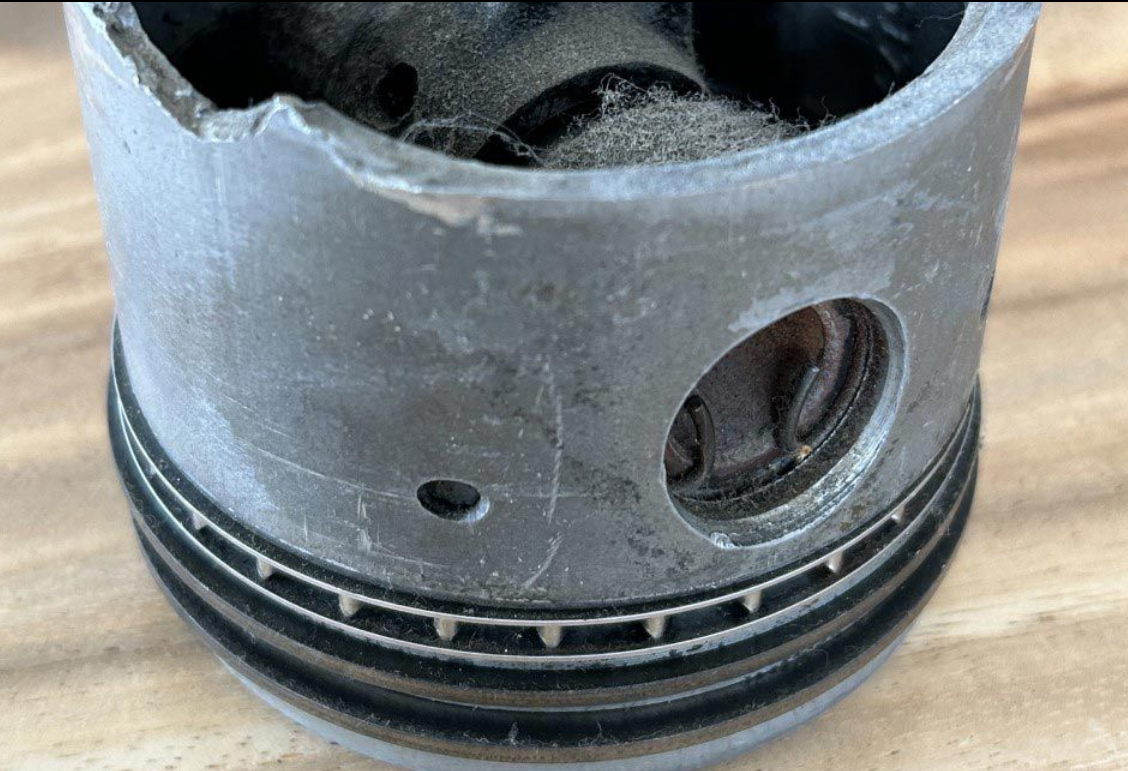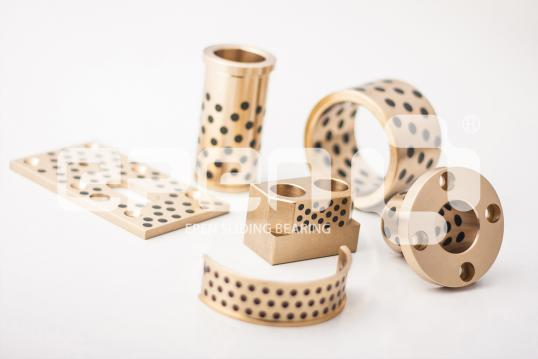
Norman Gilman at Allison Engineering in Indianapolis is credited with pioneering large-scale applications of a steel-backed split-shell three-layer bearing which made it possible for aircraft engines to reliably deliver very high power (patent date May 1929). During WWII its production was also licensed to Vandervell in England, where the bearings were used in the famous Rolls-Royce Merlin V-12 that powered the Hurricane and Spitfire fighter aircraft. Later in the war, German engineers studying captured Allied aero engines discovered such bearings, and Hitler’s “enabler,” Albert Speer, saw to it that German engines were converted to plain bearings as well, releasing a lot of rolling-bearing manufacturing capacity for other uses.
Although the original development employed a thin layer of soft bearing metal, materials having higher fatigue strength—copper-lead, silver, and more recently aluminum—have been added to the menu. The “third layer” was a very thin break-in coating of soft material such as lead, protected against corrosion (“hen-tracking”) by indium.
Plain bearings did not automatically solve all problems.
Despite the wide application of this new bearing type in automotive engines after WWII, designers were reluctant to try them in high-rpm racing engines. Mercedes and Porsche continued to equip their race engines with expensive (and short-lived) multipiece crankshafts turning on rolling bearings. Mr. Honda is said to have personally supported use of rolling bearings in his company’s roadracing engines of the 1960s.
Gradually, progressive firms like Ferrari made their own performance and durability tests, discovering that rolling bearings did not, in fact, deliver lower friction torques. They found also that plain bearings, given an adequate oil supply, were extremely durable.
The built-up crankshafts of the rolling-bearing era were beautiful to behold. Some were assembled by means of precision-machined face splines, held in contact by drawbolts. Others, such as those built by Honda for operation to as high as 21,000 rpm for roadracing, were assembled by press fitting.
Honda adopted automotive-type split-shell plain bearings for the crankshaft journals of the 1969 CB750 four-cylinder motorcycle engine, but other Japanese manufacturers continued using built-up crankshafts and rolling bearings into the 1970s. Today only a few specialized motorcycle engines (typically used in motocross) employ rolling main- or crankpin bearings.
Sump and Oil-Feed Design
Despite such improvements, during the 1970s and ‘80s many a souped-up four-stroke motorcycle engine was wrecked when oil in flat-bottomed wet-sump systems sloshed away from the oil pump’s pickup, allowing air instead of oil to be fed to crankshaft bearings. Today’s oil sumps are narrow and deep, keeping oil at the pump pickup much more reliably.
Plain bearings did not automatically solve all problems. As related previously on this site, Honda’s 750cc RC30 V-4 Superbike race engines periodically showed dark streaking of con-rod bearing shells, suggesting inadequate oil supply. Increasing oil pressure had no useful effect. When the RC45 replaced the RC30, the dark streaking persisted, and again, higher oil pressure failed to eliminate it.
In its last variant, the RC45′s oiling system changed. The original was of automotive type, which taps oil from the crank’s main bearings and runs it through drillings to the crankpins. The problem? With such a system, oil from the mains must be forced radially inward into the main journals against “centrifugal force” to get it to the crankpins.
So Honda engineers instead pumped the oil into the center of the crankshaft end (as is done in F1 engines, and as was done in WWII-era aircraft piston engines) so that “centrifugal force” helps instead of hinders the oil on its way to the crankpins. Suddenly all they needed to assure streak-free con-rod bearing shells was 12 psi.
More About Us:
Jiashan Epen Bearing Co.Ltd. is a professional manufacturer of plain bearings and wear plates, and has grown rapidly to a point where now all types of plain bearings can be supplied. Standard catalogue sizes, special sizes and designs can be produced at competitive prices and to a high quality standard.
2022 new week Epen product Recommendation:
EB65 high-strength copper alloy as the base material, use conditions according to a certain proportion of its working surface machined hole and fill one solid lubricant. High-strength copper alloy provides a high load carrying capacity and the solid lubricant can be formed lower friction.
https://www.cnepen.cn/showinfo-220-564-0.html
If you’re interested, there are various products here:
https://www.cnepen.cn/listinfo-212-0.html
Contact Us:
Tel: +86-573-8482 4388
Fax: +86-573-8482 4386
Mail us: epen@cnepen.cn
Website: www.cnepen.com



